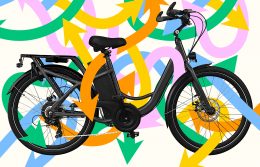6 Popular Car Scams to Watch Out for
“Never trust other drivers on the road,” parents will often tell their newly licensed, 16-year-old drivers. “It’s not you we’re concerned with, it’s the other drivers out there, and some are out to get you!” While such pointers may lead to eye rolls from inexperienced teen drivers, a recent rise in staged crashes makes this sound advice.
You read that right: staged crashes — when people purposefully get in car accidents to make outrageous (and sometimes fraudulent) insurance claims — all to put a little extra cash in their wallets.
While most of these types of accidents involve only minor damage to automobiles, it’s never fun to be the victim of an obvious ploy that takes advantage of insurance loopholes and your goodwill. Learn some common scenarios that can help you spot a staged crash and what you should you do if you’re a victim of one.
1. The Swoop and Squat
According to the California Department of Insurance, this is the most common staged-accident scam. The scheme involves one car that will drive beside you, preventing you from changing lanes, while another car abruptly swerves in front of you and comes to a sudden stop. This usually causes a rear-end crash, and the rear-ended vehicle is typically full of passengers who will make false injury claims.
2. Trouble at Intersections
Intersections can be dangerous and confusing spots of roads, and they provide perfect opportunities for crooks to take advantage of innocent drivers. In some cases, drivers may motion you forward at an intersection only to slam into you and claim he or she never gave you the signal. Another tactic, called the “left turn drive down,” happens when one driver motions you to make a left turn in front of him or her. Suddenly, he or she will pull in front of you, blocking your path. At this moment, a second car crashes into you. The car that blocked you drives away, which makes it appear that you pulled in front of the car that crashed into you.
3. The Flat Tire
Thieves work in pairs to puncture your tire and follow you as it goes flat. One offers to help, while the other removes your belongings from the car. An alternate version has the thieves pretending to have a flat tire themselves. When you stop to render aid, one distracts you while the other pilfers through your valuables.
4. The Good Samaritan
Try not to confuse those trying to swindle you with Good Samaritans. This scam happens when a witness to an accident jumps to your side at the scene and tries to convince you to go to a certain repair shop, see a certain attorney, or make an appointment with a certain chiropractor. While this might seem like someone lending a helping hand in your time of crisis, it may be anything but. These types of recommendations typically end up being fraudulent, fooling the victim by convincing them of unnecessary car repairs or medical problems that can result in unnecessary personal injury claims. Tip: This con often occurs after a genuine crash.
5. Asking for Directions
In this scenario, a thief pretends to be lost and asks for help with directions, often using a large map as a distraction. While you’re attempting to help, an accomplice takes things from your car. They make a getaway before you realize anything is missing.
6. The Phony Witness
If someone conveniently pops up out of nowhere and backs up the fabricated story of the other driver, this should tip you off to some shady business. If the stories told are obviously false, assume the two are colluding to con you and your insurance company into paying false damages.
What to Do
According to the Department of Motor Vehicles (DMV), it’s best to collect as much information at the scene as possible. As the DMV’s website notes, “Staged car accident scam artists are vulnerable to facts.”
Snap as many pictures at the accident scene as possible, including photos of the other car’s license plate, the driver, and all passengers involved. Always travel with pen and paper to record the following in the event of an accident:
- Vehicle registration information and vehicle identification number
- Car insurance company and policy number
- Name, address, and phone number
If you suspect you’ve been involved in one of these car cons, be sure to contact police immediately to file a report.
Whether staged or not, car accidents are inevitable. Contact your Texas Farm Bureau Insurance Agent today to ensure you’re covered for whatever happens on the road.
© 2017 Texas Farm Bureau Insurance



